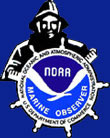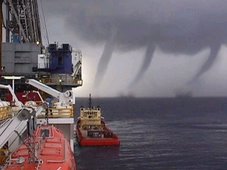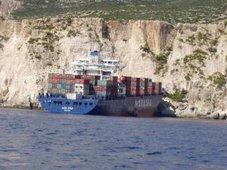 Minn. and Wis. tornado drills planned for severe weather awareness week
Minn. and Wis. tornado drills planned for severe weather awareness week Statewide tornado drills will be held later this week as part of the annual Severe Weather Awareness Week. The week is a joint operation of the National Weather Service; Minnesota's Minnesota Department of Public Safety, Division of Homeland Security and Emergency Management; county- and city-level emergency managers. Monday's sever-weather-week topics include thunderstorms, hail, straight-line winds, lightning; Tuesday studies severe weather warnings; Wednesday centers on floods and flash floods; Thursday is tornado day; Friday focuses on heat waves.
On Thursday, the National Weather Service will simulate a tornado watch for Minnesota at 9 a.m. Two tornado warning drills are planned later that day.
The first will be at 1:45 p.m. All jurisdictions in the state will activate their warning systems and will give schools, businesses, and hospitals the opportunity to practice their plans for getting people to safe shelters.
The second drill, at 6:55 p.m., is voluntary, and will allow families and second-shift workers to practice sheltering plans. Two-thirds of Minnesota's 89 counties will hold the second drill. The counties participating in the second drill are: Anoka, Beltrami, Benton, Big Stone, Carver, Chippewa, Chisago, Clearwater, Cottonwood, Crow Wing, Dakota, Douglas, Freeborn, Goodhue, Grant, Hennepin, Hubbard, Isanti, Jackson, Kandiyohi, Lac Qui Parle, Lake of the Woods, Le Sueur, Lyon, Mahnomen, Martin, Mc Leod, Meeker, Mille Lacs, Morrison, Mower, Murray, Nicollet, Nobles, Norman, Olmsted, Pine, Pipestone, Polk, Pope, Ramsey, Red Lake, Redwood, Renville, Rice, Roseau, Scott, Sherburne, Stearns, Steele, Stevens, Swift, Todd, Traverse, Wabasha, Wadena, Waseca, Washington, Watonwan, Wilkin, Wright. Also on Thursday, the National Weather Service will simulate a tornado watch for Wisconsin starting at 1 p.m. At 1:40 p.m., the National Weather Service plans a tornado warning drill for nine counties in western Wisconsin: Barron, Chippewa, Dunn, Eau Claire, Pepin, Pierce, Polk, Rusk and St Croix.
Tornadoes reported in South Plains
Thursday, April 24, 2008
Story last updated at 4/24/2008 - 1:48 am
High hopes for big storms in the Hub City were dashed Wednesday by cooler weather, but other counties in the South Plains may have gotten more than they bargained for.
Tornadoes reportedly touched down in both Dawson and Scurry counties, said David Hennig, forecaster with the National Weather Service in Midland, though no major damage was reported.
"Officially, we've got zero right now because we're not sure," Hennig said of the twister sightings.
An emergency manager with the service was dispatched to investigate the Scurry County scene, which was near Snyder. Those reports suggested it could have been a straight-line wind rather than a tornado that downed power lines and uprooted trees in the area, Hennig said.
The more definite tornado, which reportedly touched down between Patricia and Ackerly in Dawson County, was captured in a photograph, though Hennig said an official report wouldn't be filed until a team investigated the area.
While Lubbock received just a trace of rain, coupled with winds gusting up to 48 miles per hour, areas of Borden and Dawson counties filed reports of nearly 5 inches of rainfall, Hennig said. The average for that region was nearly 2.5 inches.
More weather may be on the way, said meteorologist Robert Barritt with the National Weather Service in Lubbock, but it won't be here until the weekend. MARITIME NOTE
CHEBOYGAN - Home from its second full season of icebreaking, the U.S. Coast Guard cutter Mackinaw and crew are in the midst of a brief maintenance period to prepare for the upcoming spring buoy commissioning season.
Nearly 40 large lake buoys, pulled prior to ice development, will be reset at various points of the Great Lakes.
“Crewmembers were periodically left ashore throughout the ice season to ensure all summer hulls were ‘tanked' - painted, batteries charged, solar panels inspected and lamps changed,” said Cmdr. John Little. “This is a big job and usually occurs during the very worst of weather conditions but they are ready and the deck gang has done well. Buoytending operations will soon begin in lower Lake Michigan and along the Wisconsin Door Peninsula. Four mid-lake NOAA buoys will also be reset over the next few weeks.”
The Mackinaw returned to Cheboygan Friday afternoon after nearly five weeks in Lake Superior's Whitefish Bay. Since the first week of January, the Mac accumulated more than 1,200 icebreaking hours, escorted more than 200 vessels and freed 45 ships beset in thick ice.
“These vessels were carrying iron ore, coal, wheat and cement to ports throughout the Great Lakes,” Little continued. “Much of the last two months was spent in the St. Mary's River and Whitefish Bay, however, the cutter also spent significant time laying initial tracks in Green Bay and assisting vessels transiting across the Straits of Mackinac. This season has been touted by many of the masters of these commercial lake carriers as the worst ice season in the last 11 years. The Mackinaw's extended stay in Whitefish Bay and the fact that two of our 140-foot cutters are still there can attest to this sentiment.”
Little said the Mackinaw worked with three 140-foot Bay Class cutters - the Katmai Bay, Neah Bay and Biscayne Bay, along with the Canadian Coast Guard cutter Samuel Risley.
“This was really the first year that tandem operations of Mackinaw and the Bay Class cutters was utilized fully and it proved to be quite successful,” Little noted. “These smaller workhorses took advantage of Mackinaw's larger track in very heavy ice to expand the track width by using their speed wakes. As Mackinaw pounded through ice up to three feet thick, the 140s would charge behind her and wake-out the track. It worked beautifully - a real team effort that also involved close coordination with the overseeing vessel traffic service, Soo Traffic and the U.S. Army Corps of Engineers lockmaster to ensure safe and efficient ship queuing.”
As a result, hundreds of ships transited through the ice-choked Whitefish Bay with only minimal delays even when the weather was at its very worst.
“While in Whitefish Bay, Mackinaw also conducted several aids to navigation operations moving buoys from the narrow channels that had been shifted off station by massive ice floes up to six feet thick and dozens of miles square in size,” Little said. “The last ship directly assisted by Mackinaw for the season was the Canadian ship Algoisle, beset on April 16 in a shifting windrow in lower Whitefish Bay near Ile Parisienne. The last buoy reset was the Point Iroquois Anchorage Buoy A after it was pulled into the middle of a busy anchorage area near Brimley, Mich.”
RS


































































































![Validate my RSS feed [Valid RSS]](valid-rss.png)